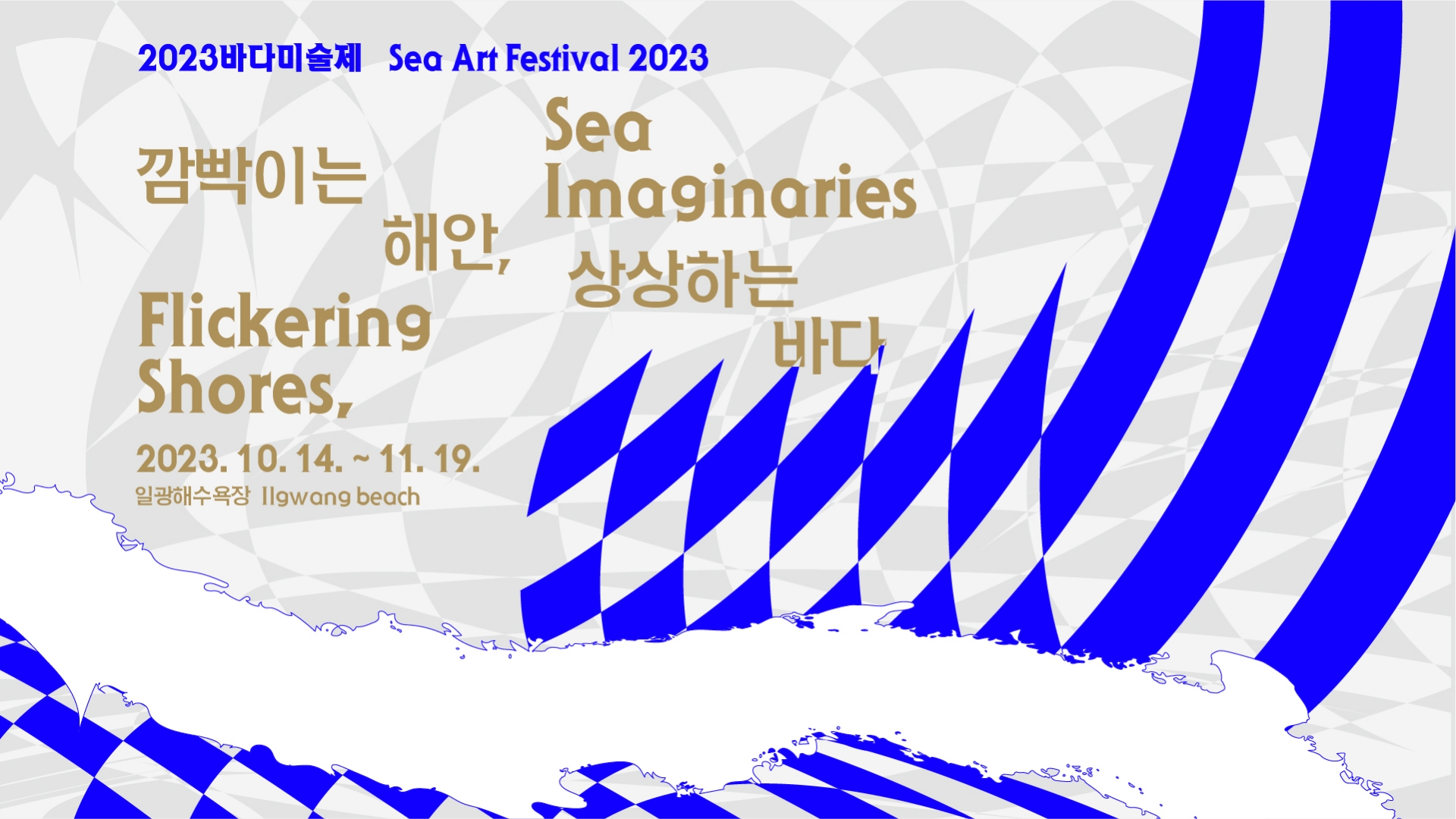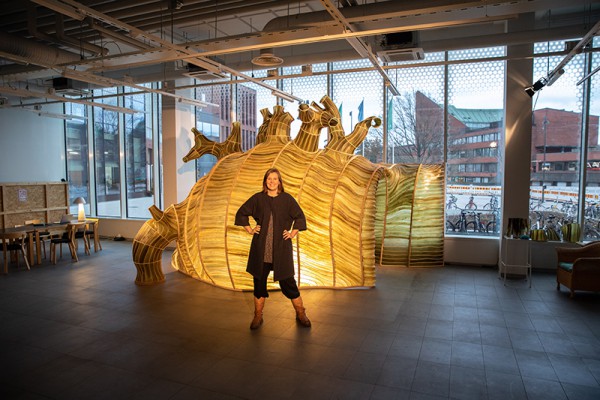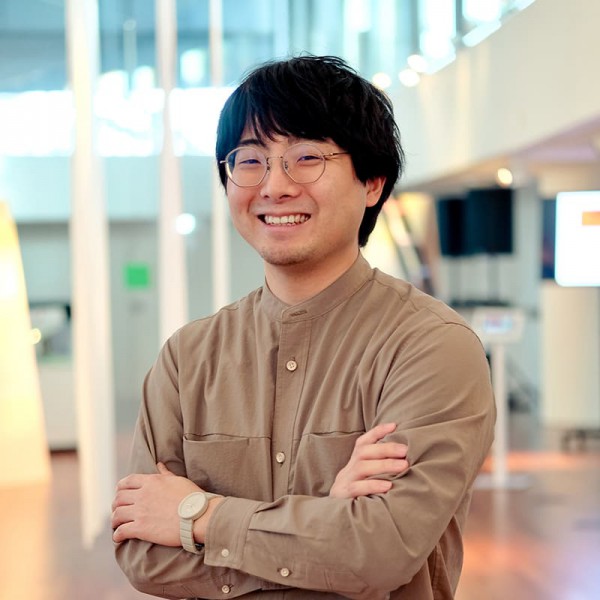


Flickering Shores, Sea Imaginaries, this year’s edition of the Sea Art Festival, is inviting us to rethink our relationship with the sea, referring to the beauty but at the same time, the fragility of our shores, and exploring alternative frameworks and visions for engaging with the ocean and marine environments.
The sea is deeply embedded in our lives and capitalist society, a vital source for our survival, but also a vast industry we exploit for food, medicines, energy, minerals, trading, travel and so on. But increased human activity, from extensive cruise tourism, shipping and overfishing to nuclear testing, pollution and deep-sea mining have been plaguing the sea, having a huge impact on marine ecosystems and habitats.

Instead of viewing the sea from the coast as a divided and abstract surface for moving around commodities, Flickering Shores, Sea Imaginaries reminds us that we are part of this body of water. This year's Sea Art Festival aims to explore new relationships with the sea and its ecologies, enabling spaces for cooperation, collective visions and synergies as a call to resistance and restoration.

Calypso36°21 is a women-led, French Moroccan collective that was created in Rabat in 2018 and founded by Zoé Le Voyer, Justine Daquin, Manon Bachelier, and Sanaa Zaghoud. The collective is named after the coordinates of Calypso Deep, 36°34′N 21°8′E, the deepest point of the Mediterranean Sea, which is located in the Hellenic Trench in Greek waters. Now headed by Sanaa Zaghoud and Justine Daquin, the collective has developed a curatorial, transdisciplinary, experimental, and participative approach. An itinerant research program imagined and produced by the collective called Out.of.the.blue. looks at the knowledge production processes that shape the comprehension of (liquid and solid) Mediterranean territories.
VIEW MORE 
Muhannad Shono is not limited to any one particular medium or scale. His multidisciplinary practice is catalyzed and structured by the story. Shono’s work harnesses the power of narrative by creating and contesting personal, collective, and historical truths. Impacted by childhood memories, throughout his early career—and right up until today—the aim and expression of his work are rooted in exploring both the existent and non-existent boundaries which have characterized his life. His works have been presented across the world, from intimate drawings and large-scale sculptural works to robotic and technological pieces, all of which illuminate a journey he would like to take us on.
VIEW MORE 
Rebecca Moss’s artistic practice explores notions of absurdity, precarity, and instability, and takes a variety of forms across different media. She is drawn to slapstick for its sense of reciprocity inasmuch as our surroundings can act back upon us because we are not always in control. She is inspired by slapstick performances and creates scenarios that stage interactions between human gestures and elemental forces, where an idea or gesture is humorously played out to the point of futility, chaos, or crisis.
VIEW MORE 
Kasia Molga not only exposes the stories hiding in the intersections of art and science but also explores how we can tell these stories through collaboration with more-than-human fellow “earthlings.” Her gravitation towards navigating our changing relationship with the natural world was born on the open sea, where she spent her childhood growing up onboard merchant navy vessels with her father. Her internationally acclaimed work How To Make An Ocean explored how tears could be used to create marine ecosystems. This led to further investigating how other bodily resources can be used to support life in her work How To Become Wholesome.
VIEW MORE 
Jang Seungwook currently works as an animation director in Reims, France. Winner of prizes at several international festivals, including IndieJúnior – International Children’s and Youth Film Festival in Portugal, In The Palace International Short Film Festival in Bulgaria, ShorTS International Film Festival in Italy, and Digicon6 ASIA Korea Regional Awards in South Korea, he is also expanding his artistic horizons by working as a children’s book author and illustrator.
VIEW MORE 


Can art help us extend our empathy beyond what we know and see in our immediate surroundings?
Stars On the Sea is a story about the environment that surrounds us. A mother and her young children are seen in a domestic space, while the building is filling up with water. They are moving higher up in the building to escape the already flooded floors, only for more water to reach them. As time passes by, and they have now reached the top, they are trapped in what looks like a vast flooded landscape with floating dwellings.
Jang Seungwook is using human characters in his animation, but in fact they could represent any other living creature. This becomes more evident as the work progresses. For the artist, the situation the creatures face here is not much different from what any other living being would face, but what the main characters in the work symbolize is ultimately who we are.
It symbolizes us (human and non-human) who have no choice but to live on this earth. The environment, our planet is one of the important things we must pass on to the next generation. So, if we were in the place of the mother in this work, what would we do?
‘Noah’s Ark’ appears in the animation in one of the children’s story books. Rather than foreshadowing their salvation, it talks about the coming 'water crisis'. The ark symbolizes salvation in the book, but in reality, the characters fight through harsh conditions in order to survive. In one scene, the family watches TV at home, which presents part of a previous work of the artist. By including these scenes acted out by one character focused on himself and looking only at himself, it alludes to human selfishness.
Jang Seungwook created this work with sorrow and heartbreak, watching countless lives silently enduring the consequences of events for which they bear no direct responsibility. Through the images of those who appear like shining stars in the sky in the last scene, he wants to convey the responsibility we have as people living in this era, the affection, respect, and concern for disappearing creatures, and the hope that their images will not become ours.
VIEW MORE 
What does deep sea feel like? As we are rushing to exploit the seafloor, mining for minerals, what are the likely ecological consequences and impact on marine species? Do we need deep sea mining?
The drive to explore and exploit the sea floor means this once seemingly infinite landscape is now being carved up into territorial space. Common Heritage is an urgent response to the gold rush of deep-sea mining for rare earth minerals, exposing how reverberant layers of industrialization and territorial claim have affected the way we relate to our environment.
Highlighting fantasies we construct and investigating the relationship between exploration and exploitation, the film draws into focus how these romanticized stages are in fact borders of conquest, annexed for geopolitical territory appropriation and mineral resources.
In 1967, Arvid Pardo, the Maltese Ambassador to the UN gave a speech, which instigated the Common Heritage of Mankind principle and after 10 years of international conference and debate, bore the Law of the Sea treaty. Pardo called for international regulations that would prevent further pollution at sea, protect ocean resources, and ensure peace. He proposed that the seabed constitutes part of the common heritage of mankind. His speech, narrated by science fiction writer, Gwyneth Jones is the provocation for the film. Dystopian science fiction motifs are harmonized with a poetic montage of deep-sea exploration archive footage including press conferences, interviews and speeches that reveal tensions, contradictions and disputes in the governance and territorial demarcation of such a vast and powerful landscape. This juxtaposition both questions our current state and our future engagement with this critical frontier.
Common Heritage was conceived during the 'Culture & Climate Change: Future Scenarios' residency, funded by the Jerwood Charitable Foundation, the University of Sheffield, Open University, Grantham Sustainable Futures and the Ashden Trust. Film production was funded by the Jerwood Charitable Foundation.
Credits
Produced by: Elena Hill
Editor: Sergio Vega Borrego
Sound & Music: Nicolas Becker with Lucy Railton & Stefan Smith
VIEW MORE 
Lab C explore locations in different regions, and in nature to discover nuanced stories. They led a workshop with children for Sea Art Festival 2023 to explore forgotten spaces around Ilgwang, especially the Ilgwang Stream which is a brackish water zone. The results and videos of the workshop are presented in this exhibition allowing us to contemplate the importance of our relationship with nature.
Muddy water has a blurry meaning, as it can be a mixture of dirt and water. “Blurry” is an interesting term for the artists here, as it indicates a changing state, for example a variable status between “clean (or flowing, running) water” and “dirty (or stagnant, messy) mud.”
In Korean, as in other languages, the phrase “muddy water” is used frequently and commonly in a negative way. And similarly, the expression “mud fight”, which figuratively indicates a dirty fight. This ambivalence between “positive” and “negative”, or “water” and “dirt”, while confusing, it can be fascinating. Like the randomness of chaos that can have varied potential.
Ilgwang Stream, which meets Icheon Port on the left side of Ilgwang Beach, flows into the sea by combining 10 tributaries, including Dalum Mountain Valley, Hambaek Mountain Valley, Nine Mountain, and Ilgwang Mountain Valley, which are the origins. And when the tide progresses, the seawater flows back into the Ilgwang Stream. Ilgwang Stream, where seawater and freshwater meet, is a brackish water area and a wetland. According to a survey by the Busan Research Institute in 2001, a total of 395 species were observed in the area, and in 2005, salmon, which was released into the wild from Gijang, returned in the stream. In 2021, with the creation of Ilgwang Icheon Ecological Park and the surrounding trail project underway, rapid changes are expected to occur in the ecological environment of Ilgwang Stream.
Lab C’s research shows evidence of fish diversity in the stream. In addition to the four-white fish of Ilgwang Stream, sweetfish, mullet, perch, blowfish, salmon, and eel, which are conciliatory fish, and even the brackish brown goth, which is second class endangered shellfish.
If one walks up along Ilgwang Stream, they will see the river maintenance work still in full swing. The spatial transformation of brackish water and wetlands continues. When management and control systems began to intervene, the flow of water that naturally flowed into the sea is changing. And obviously, changes are also occurring in various life forms that rely on wetlands and brackish water areas. Could this human intervention here be considered a recovery or another destruction? It is at this point that the artists are interested in questions about the presence of Ilgwang Stream through the concept of 'muddy water.'
VIEW MORE 
There are no boundaries in the sea or land. Fences are human-made structures and boundaries are drawn and constructed by humans. A space surrounded by a fence gives a clear sign to people that it can not be entered, however one’s sight can penetrate a space enclosed with a fence or border. Boundaries can be penetrated from the outside.
In Yasuaki Onishi’s installation, the fence that separates this side from the opposite one marks that boundary. Works with fences of different types and sizes create permeable volumes by layering boundaries. Yasuaki uses a ready-made and mundane object such as a fence, sculpting an empty space and allowing it to be filled with our imagination. The space between ourselves and the sea or nature may be thought of as a separation or a border, but here this hollow space is materialized with a structure of vertical and horizontal lines, volumes and voids, allowing us to fill in these forms and create different interpretations or visualize new landscapes. Layer of Boundary explores ideas of emptiness and fullness, absence and presence. Through this installation Yasuaki also explores relationships - and borders - between human and nature. The familiar fence object is reversed; the artist manipulates it so it’s not a fixed structure anymore, but one that can be penetrated and one that can offer different points of view. In a way, what is thought of as a boundary between ourselves and the sea, we are invited to erase with our imagination.
Yasuaki invites us to rethink the division between human and sea, human and nature, but also the separation between human activity at land and sea. He reminds us of the need to look at sea, land and humans together and as connected entities in order to be able to address the urgent transformation the sea is undergoing.
VIEW MORE 
when water seeps through the grains of sand under your feet is an artwork deriving from the novel, Gaenmaeul by Young-soo Oh. The film, based on the same novel and also titled Gaenmaeul (The Seashore Village in English), was filmed in Ilgwang in 1965.
It is the story of a young woman named “Hae-soon”, who loses her fisherman husband only 10 days after their marriage because of a storm. But, commonly, there are several widows in this village since a lot of fishermen die at sea while they are on fishing trips for a living and to support their families. After her husband dies, a young man named Sangsu becomes Hae-soon’s suitor, and her brother-in-law and mother-in-law, who spot the couple, order them to leave the village before rumors spread out and bring shame to the family. So they leave Gaenmaeul and start working at a quarry but as fate has it, Sangsu also dies from an accident. Eventually, Hae-soon returns to the seaside village and the widows welcome her back. The novel reflects the passive image of women of that time and depicts their tragic lives from a fatalistic point of view.
The artist, inspired by this old novel, started collecting women’s stories in Ilgwang by interviewing women living in the area to capture their memories of Ilgwang as their living place, home, and reality. Dukkyoung Wang debunks gender stereotypes and ideas about the coast and sea as places dominated by men, reminding us that women throughout history have been an inherent and important part of sea histories and livelihoods that depend on the sea.
The glass bottles in the installation contain the women’s stories as messages in bottles floating in the vast sea. These bottles reach one room, a private and innermost place that represents the beach, a place where each body senses and drifts. This is the place covered with sand where Hae-soon lived, the artist lives, and we live together.
VIEW MORE 

포레스트 커리큘럼은 남아시아와 동남아시아를 잇는 삼림지대 조미아의 자연문화를 통한 인류세 비평을 주로 연구합니다. 작품 유랑하는 베스티아리는 이 연구의 일환으로, 비인간적 존재들이 근대 국민국가에 내재된 계급적이고 세습적인 폭력과 그에 따른 잔재들에 어떻게 대항해왔는지를 보여주는 작품입니다. 좌중을 압도하는 듯한 거대한 깃발들은 위태롭고도 불안하게 스스로를 지탱하고 있는 듯 보입니다. 깃발에는 벤조인이나 아편부터 동아시아 신화에 등장하는 동물들까지 비인간 존재들을 상징하는 대상들이 그려져 있습니다. 각 깃발들은 비인간적 존재들의 대표자로서 모두가 한데 결합되어 아상블라주 그 자체를 표상합니다. 또한 깃발들과 함께 설치된 사운드 작품은 방콕과 파주에서 채집된 고음역대의 풀벌레 소리, 인도네시아의 경주용 비둘기들의 소리, 지방정부 선거를 앞두고 재정 부패를 유지하기 위한 수단으로 쓰이는 불필요한 공사에서 발생하는 소음, 그리고 위의 소리들을 찾아가는데 사용된 질문들과 조건들을 읽어 내려가는 내레이션으로 이루어져 있습니다.




